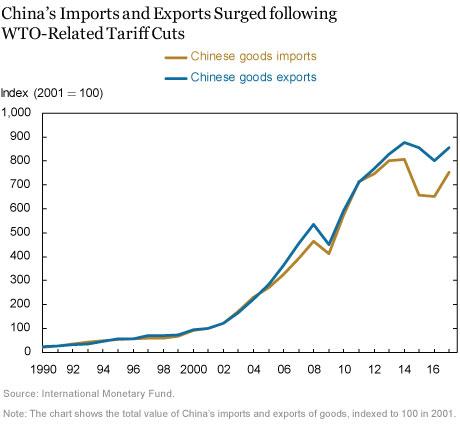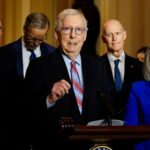The Congressional Budget Office (CBO) has projected that implementing tariffs could reduce the federal budget deficit by $2.5 trillion over the next decade.This important fiscal impact underscores the potential of trade policies to influence the nation’s financial outlook amid ongoing debates over economic strategy. The CBO’s analysis provides a detailed forecast of how tariff revenues and related economic effects may shape government revenues and expenditures through 2034.
Tariffs Projected to Significantly Lower National Deficit Over Coming Decade
The latest report from the Congressional Budget Office (CBO) reveals that the implementation of new tariffs is expected to play a crucial role in decreasing the national deficit by an estimated $2.5 trillion over the next decade. This projection is grounded in the tariffs’ anticipated boost to federal revenue without significantly hindering economic growth. The collection of increased tariff duties, paired with a slowdown in certain imports, forms the backbone of this fiscal advancement.
Key factors contributing to the reduced deficit include:
- Enhanced tariff revenues from a broader range of imported goods.
- Reduction in trade deficits which improve the overall balance of payments.
- Encouragement for domestic production leading to higher employment rates and taxable incomes.
| Category | Projected Impact |
|---|---|
| Tariff Revenues | +$1.8 Trillion |
| Economic Growth Effect | +0.5% GDP |
| Deficit Reduction | -$2.5 Trillion |
Economic Analysis Reveals Impact of Tariffs on Trade and Government Revenue
According to recent findings by the Congressional Budget Office (CBO), the implementation of tariffs is projected to significantly reshape both trade dynamics and fiscal health over the next decade. The analysis highlights that increased tariffs will curtail the volume of imports, directly influencing international trade flows. While this contraction in trade could pressure certain sectors reliant on imported goods, it simultaneously enhances domestic production incentives, leading to what economists call a “rebalancing effect.” Key outcomes identified include:
- Reduction in trade deficits by approximately $2.5 trillion within a 10-year timeframe.
- Surge in government revenues owing to tariff collections, boosting federal funds available for public services and debt reduction.
- Gradual shifts in consumer prices as businesses adjust supply chains and product sourcing strategies.
| Category | Estimated Impact (10 years) |
|---|---|
| Trade Deficit Reduction | $2.5 Trillion |
| Government Revenue Increase | $450 Billion |
| Average Consumer Price Increase | 1.8% |
However, the CBO cautions that these benefits come intertwined with challenges, notably for industries dependent on imported components and goods. The adjustment period could see fluctuations in employment patterns and sectoral profits. Moreover, trading partners might respond with retaliatory tariffs, presenting a complex negotiation landscape ahead. Policymakers will need to balance these economic shifts carefully, ensuring that long-term deficit reductions do not disproportionately burden consumers or critical supply chains.
Potential Consequences for Consumers and Industries Under New Tariff Policies
Consumers may face higher prices as the new tariff policies increase the cost of imported goods. Essential items, ranging from electronics to everyday household products, could see price hikes due to added import duties.Small businesses that rely on foreign materials might also pass on increased costs to customers. However, proponents argue that these tariffs could protect domestic jobs by encouraging local manufacturing and reducing dependency on foreign suppliers. Ultimately, consumers could experience a mixed impact: higher prices but perhaps more robust domestic industries.
Industries across sectors will experience varying effects. Export-oriented businesses may encounter retaliatory tariffs from trade partners, leading to reduced competitiveness abroad. Conversely, sectors like steel and aluminum manufacturing might enjoy a competitive edge with diminished foreign competition. The table below summarizes the possible impacts on key industries:
| Industry | Impact | Potential Outcome |
|---|---|---|
| Automotive | Increased import costs | Higher vehicle prices |
| Steel & Aluminum | Reduced foreign competition | Growth in domestic production |
| Agriculture | Retaliatory tariffs abroad | Export challenges |
| Technology | Supply chain disruptions | Innovation slowdown risk |
Policy Recommendations for Balancing Deficit Reduction with Economic Growth
To harness the potential of tariffs in reducing the national deficit without stifling economic expansion, policymakers must adopt a nuanced approach that combines fiscal discipline with strategic investment. Targeted tariff measures can protect key domestic industries and stimulate job growth while minimizing inflationary pressures. Though,complementary policies such as enhanced workforce training and innovation incentives are essential to ensure that the economy remains competitive on a global scale. Additionally,transparency and regular assessments of tariff impacts must be prioritized to swiftly adjust strategies as market conditions evolve.
Balancing deficit reduction and growth requires a multipronged strategy:
- Implement phased tariff schedules to allow industries to adapt and avoid sudden cost shocks.
- Invest in infrastructure and technology to boost productivity and support tariff-induced domestic demand.
- Maintain trade diplomacy to prevent retaliatory measures that could negate deficit gains.
| Policy Element | Expected Outcome | Time Horizon |
|---|---|---|
| Phased Tariff Implementation | Industry Adjustment,Cost Stability | 1-3 Years |
| Infrastructure Investment | Higher Productivity | 3-5 Years |
| Workforce Development | Skilled Labour Growth | 5+ Years |
Concluding Remarks
As the Congressional Budget Office projects a $2.5 trillion reduction in deficits over the next decade due to tariffs,policymakers face complex decisions balancing economic growth and fiscal duty. While tariffs present a significant tool for narrowing the budget gap, experts caution that the broader economic impacts remain uncertain. Moving forward, ongoing analysis will be crucial in assessing how these trade measures contribute to the nation’s financial health and overall economic stability.










